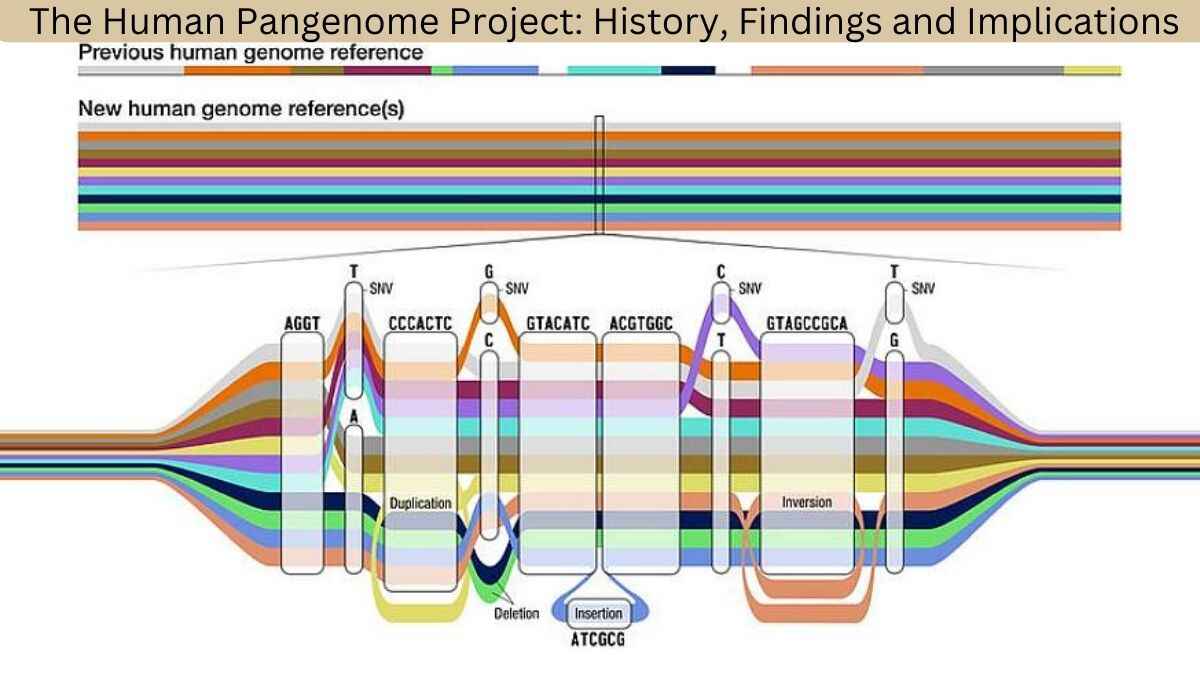
Human Pangenome Project: Scientists from the International Human Pangenome Reference Consortium have published a new, high-quality collection of reference human genome sequences. New research may help understand how genetic diversity is related to health and disease. New diverse pangenome, appearing 20 years after the first sketch in 2003.
HPRC has released a new high-quality collection of reference human genome sequences, including the genome sequences of 47 people, with the goal of increasing that number to 350 by mid-2024.
This article will help you better understand what has been published and what Pangenome is.
A little history
The phrase was originally used in 2005 by Thomas G. Tettelin and his colleagues at the Institute for Systems Biology in Seattle, Washington, when they looked at the genomes of various strains of Escherichia coli.
Tettelin and his colleagues proposed that the term should be used to refer to the entire set of genetic material in a species. This includes both genes and variants present in every member of the population as well as genes present only in a subset of individuals.
The pangenome is much larger than any one person’s genome and can be used to study the genetic diversity of a species.
They found that the genetic diversity between the strains was quite high. This diversity includes larger-scale changes such as gene duplications and deletions in addition to single nucleotide polymorphisms (SNPs), which are just one aspect of it.
This theory has been applied to a variety of organisms, including bacteria, archaea, fungi, plants, and mammals. Pangenome investigations have revealed high levels of genetic variation within species, which has been used to better understand the evolution of organisms, the spread of disease, and the creation of new drugs and therapies.
One of the most important applications of pangenome research is in medicine. Researchers can find genes essential for pathogen survival by comparing the genomes of different pathogen strains. This knowledge could be used to create drugs that target these genes, eliminating pathogens without harming the host.
Recent findings and implications
The Human Pangenome Project or Human Pangenome Reference Consortium (HPRC) is a project sponsored by the National Human Genome Research Institute (NHGRI).
The project aims to sequence and assemble genomes from diverse people across the globe for scientists and researchers to better understand and represent the genomic landscape of populations around the world.
“By using a pangenome reference, we can more accurately identify larger genetic variations called structural variants,” said Dr. Mobin Asri. student at the University of California Santa Cruz and co-first author of the paper. “We were able to find variants that had not been identified by previous methods that depended on a linear reference sequence.”
Related to this, the HPRC has released a new high-quality reference human genome sequence collection that includes the genome sequences of 47 people, with the goal of increasing that number to 350 by mid-2024.
Recent findings of the Human Pangenome Project include:
- The identification of more than 100 million new variants in the human genome.
- The discovery of new genes and genetic variations has been linked to diseases such as cancer, heart disease and schizophrenia.
- The development of new tools and methods to study human genetics and disease.
This discovery has the potential to change the way we study and treat disease. For example, the discovery of new genes and genetic variations associated with cancer could lead to the creation of new targeted drugs. This project could be very useful in understanding human genetics and could lead to the development of new diagnostic tests and treatments for a variety of disorders.
Categories: Optical Illusion
Source: pagasa.edu.vn